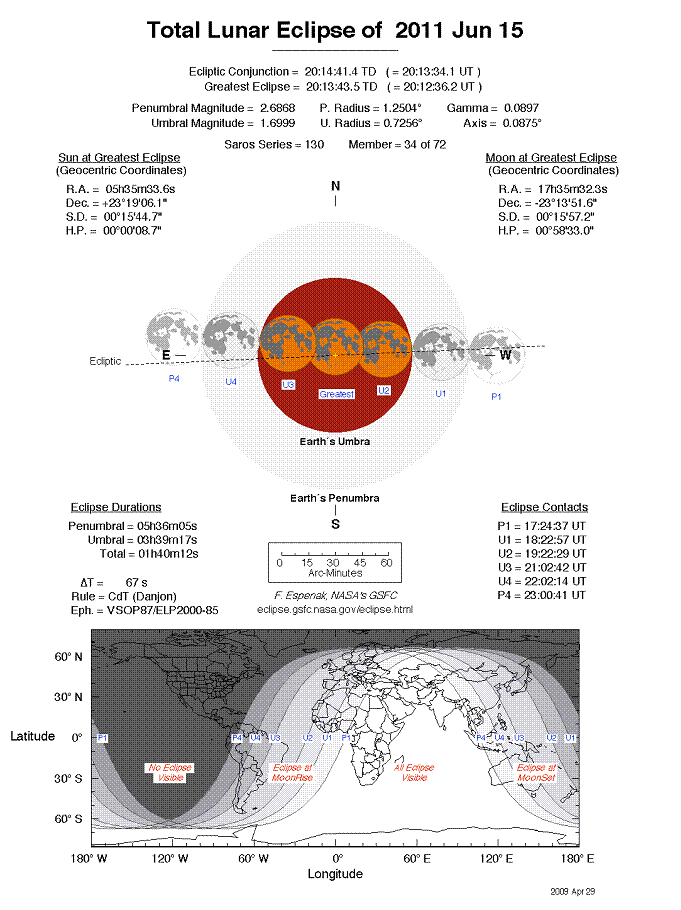Condizioni di visibilità ed informazioni varie, dati fonte NASA, rielaborati con WinOccult (C)
Eclipse Predictions by Fred Espenak, NASA's GSFC

P1, Primo contatto : punto della Terra in cui l’eclisse inizia come parziale al sorgere del Sole
P2, Secondo contatto : punto della Terra in cui l’eclisse finisce come parziale al sorgere del Sole
P3, Terzo contatto : punto della Terra in cui l’eclisse inizia come parziale al tramonto del Sole
P4, Quarto contatto : punto della Terra in cui l’eclisse finisce come parziale al tramonto del Sole
U1, Primo contatto : punto della Terra in cui l’eclisse inizia come totale al sorgere del Sole
U2, Secondo contatto : punto della Terra in cui l’eclisse finisce come totale al sorgere del Sole
U3, Terzo contatto : punto della Terra in cui l’eclisse inizia come totale al tramonto del Sole
U4, Quarto contatto : punto della Terra in cui l’eclisse finisce come totale al tramonto del Sole
P1, first contact : point of the Earth in which the eclipse begins as partial at sunrising
P2, second contact : point of the Earth in which the eclipse ends as partial at sunrising
P3, Terzo contatto : point of the Earth in which the eclipse begins as partial at sunsetting
P4, Quarto contatto : point of the Earth in which the eclipse ends as partial at sunsetting
U1, first contact : point of the Earth in which the eclipse begins as total at sunrising
U2, second contact : point of the Earth in which the eclipse ends as total at sunrising
U3, third contact : point of the Earth in which the eclipse begins as total at sunsetting
U4, fourth contact : point of the Earth in which the eclipse ends as total at sunsetting
Legenda:
La località e lo stato
I vari tempi dei contatti, se presenti. Se l’evento avviene il giorno prima o quello dopo la data della predizione è presente un segno “-“ o “+” immediatamente dopo l’ora.
La posizione dell’angolo di contatto per ogni evento.
L’altitudine del Sole.
La magnitudine dell’eclisse.
Nel caso delle eclissi centrali, la durata.
The site name and location.
The UTC - for 1st and 4th contacts of partial eclipse, the time of maximum eclipse, and if the eclipse is central, the times of 2nd & 3rd contacts. Times are not given if the event does not occur, or the sun is not above the horizon. If the event occurs on the day preceding or following the date of the prediction, a '-' or '+' (respectively) occurs immediately after the predicted time.
The position angle of contact - at start and end of partial eclipse, and start and end of annular or total eclipse;
The altitude of the sun - at start and end of partial eclipse, and at maximum eclipse;
If maximum eclipse is visible at the location, the magnitude at maximum eclipse;
If central eclipse occurs at the location, the duration of the central eclipse.
[Note: The magnitude is computed as the fraction of the solar diameter that is obscured by the moon. During central eclipse, this value equals (diameter of moon / diameter of sun) - irrespective of location across the center path.]
